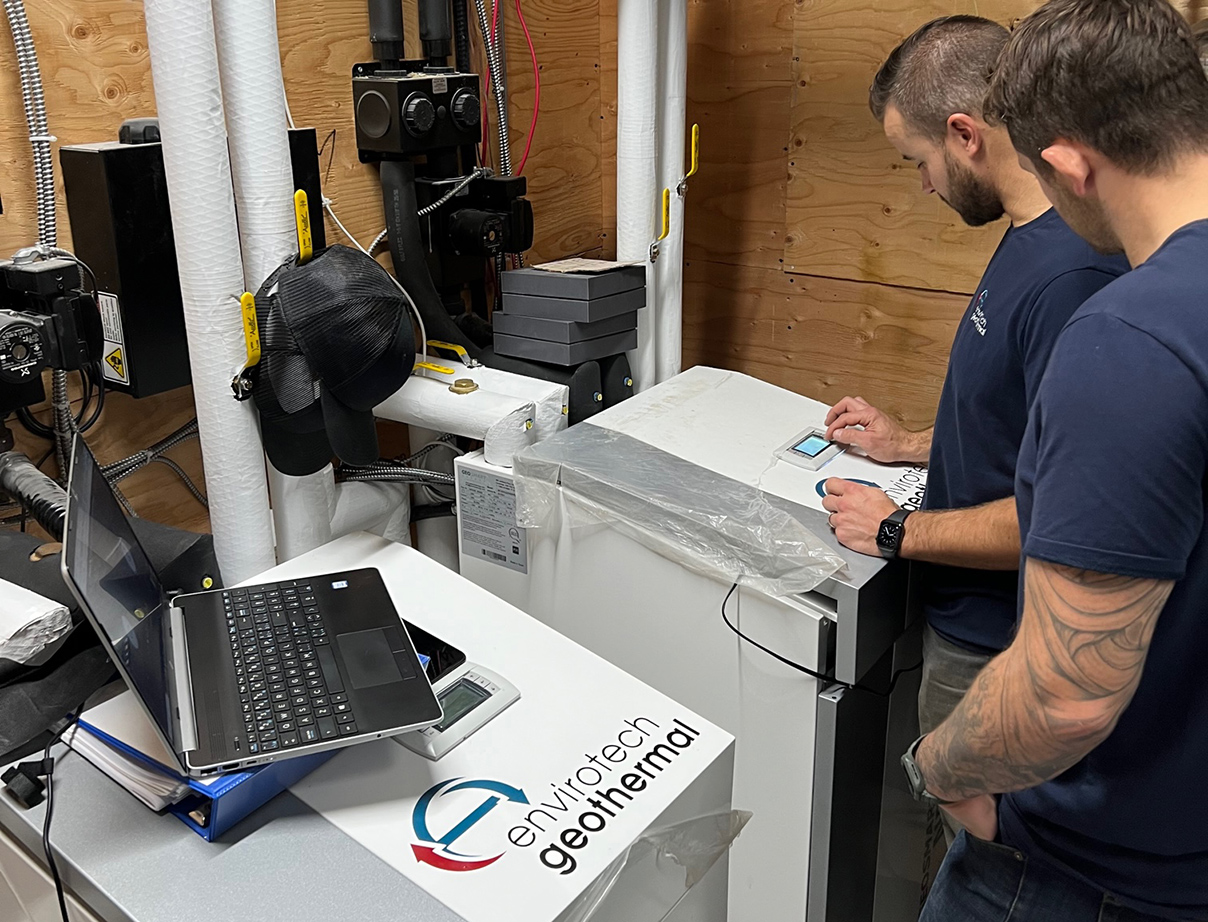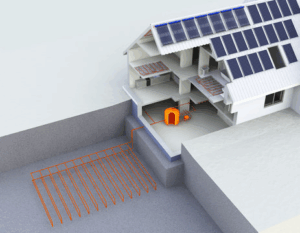Geothermal heating and cooling systems are known for their efficiency, longevity, and environmental friendliness. However, like any HVAC system, they require regular maintenance to ensure optimal performance and longevity. This comprehensive guide will walk you through the essential tips and best practices for maintaining your geothermal system.
Understanding Your Geothermal System
Before diving into maintenance practices, it’s crucial to understand the basic components of a geothermal system:
- Ground Loop: The underground piping system that exchanges heat with the earth.
- Heat Pump: The central unit that transfers heat between the ground loop and your home.
- Distribution System: The ductwork or radiant floor heating that distributes heating or cooling throughout your home.
- Thermostat: The control unit that regulates the system’s operation.
Regular Maintenance Schedule
Implementing a regular maintenance schedule is key to keeping your geothermal system in top condition. Here’s a recommended timeline:
- Monthly: Basic checks and filter replacements
- Bi-annually (Spring and Fall): More thorough inspections and cleaning
- Annually: Professional inspection and maintenance
Monthly Maintenance Tasks
1. Check and Replace Air Filters
- Inspect air filters monthly and replace as needed (typically every 1-3 months).
- Clean filters improve air quality and system efficiency.
2. Monitor System Performance
- Keep an eye on your energy bills for unexpected increases.
- Note any unusual noises, odors, or performance issues.
3. Clear Surrounding Area
- Ensure the area around the indoor unit is clear of debris and stored items.
- Maintain proper airflow by keeping vents and registers unobstructed.
Bi-annual Maintenance Tasks
1. Inspect and Clean Coils
- Check both the air handler and heat pump coils for dirt and debris.
- Gently clean coils with a soft brush or vacuum to improve heat transfer.
2. Check and Clean Condensate Drain
- Inspect the condensate drain for clogs or leaks.
- Clean the drain to prevent water damage and mold growth.
3. Examine Ductwork
- Look for visible signs of damage, leaks, or disconnections in accessible ductwork.
- Seal any minor leaks with metal-backed tape or mastic sealant.
4. Test Thermostat Function
- Verify that the thermostat is accurately reading temperature and humidity.
- Check programming to ensure it aligns with your current needs and schedule.
Annual Professional Maintenance
While many maintenance tasks can be performed by homeowners, an annual professional inspection is crucial for:
1. Refrigerant Level Check
- A technician will verify that refrigerant levels are optimal for system performance.
2. Electrical Component Inspection
- Professional testing of electrical connections, controls, and safety devices.
3. Ground Loop Pressure Test
- Checking for proper pressure in the ground loop to ensure efficient heat transfer.
4. Heat Pump Performance Evaluation
- Comprehensive testing of the heat pump’s heating and cooling modes.
5. Ductwork Inspection and Cleaning
- Professional inspection and cleaning of ductwork to improve air quality and system efficiency.
Best Practices for Long-Term Care
1. Monitor Water Quality
- If your system uses a well, regularly test water quality.
- Install a water treatment system if necessary to prevent scaling and corrosion.
2. Maintain Consistent Indoor Temperature
- Avoid drastic temperature changes, which can strain the system.
- Use programmable or smart thermostats to optimize efficiency.
3. Address Issues Promptly
- Don’t ignore small problems; they can escalate quickly.
- Keep a log of any issues or changes in performance to aid technicians.
4. Educate Family Members
- Ensure all household members understand basic system operation.
- Teach children not to play near or tamper with system components.
5. Landscape Mindfully
- Avoid planting trees with deep root systems near ground loops.
- Be cautious when digging or landscaping to prevent damage to underground components.
6. Plan for Long-Term Maintenance
- Budget for regular maintenance and potential component replacements.
- Consider a maintenance contract with a reputable Geothermal company specializing in geothermal systems.
Troubleshooting Common Issues
While regular maintenance can prevent many problems, here are some common issues and their potential causes:
1. Insufficient Heating or Cooling
- Possible causes: Thermostat issues, low refrigerant, dirty filters, or loop problems.
- Action: Check thermostat settings, replace filters, and call a professional for refrigerant or loop issues.
2. System Short Cycling
- Possible causes: Thermostat location issues, improper system sizing, or control board problems.
- Action: Ensure thermostat is away from drafts or heat sources; consult a professional for sizing or control issues.
3. Unusual Noises
- Possible causes: Loose components, failing compressor, or air in the system.
- Action: Turn off the system and call a technician for inspection.
4. Higher Energy Bills
- Possible causes: Inefficient operation, thermostat issues, or changes in energy rates.
- Action: Compare usage patterns, check for system issues, and consider an energy audit.
The Importance of Professional Service
While this guide covers many aspects of geothermal system maintenance, it’s crucial to emphasize the importance of professional service. Certified geothermal technicians have the expertise and tools to:
- Perform complex diagnostics
- Safely handle refrigerants
- Assess and maintain ground loop integrity
- Optimize system performance
- Identify potential issues before they become major problems
When choosing a service provider:
- Look for certifications specific to geothermal systems
- Check reviews and ask for references
- Ensure they have experience with your specific type of system
- Discuss maintenance plans or service contracts for regular care
Geothermal System Maintenance Conclusion
Proper maintenance of your geothermal system is essential for ensuring its efficiency, longevity, and performance. By following these tips and best practices, you can enjoy the benefits of your geothermal system for years to come. Remember, while many maintenance tasks can be performed by homeowners, regular professional service is key to keeping your system in top condition. With proper care, your geothermal system will continue to provide comfortable, efficient, and environmentally friendly heating and cooling for your home.



